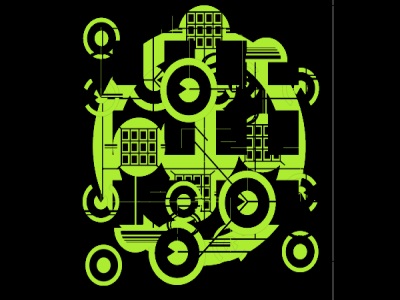Technology has opened the door for a ‘next generation’ approach to coaching, says Gavin Gobby. There are win-win benefits but only if coaches can adopt a new skill set and mindset.
Coaching is essentially a process of communication between two people. According to the conventional wisdom, it is best undertaken in real time - whether that’s face-to-face, by phone or online via video conferencing or even instant messaging. This is called synchronous communication. Both parties are connected at the same time. However it demands that the coach and the coachee schedule a mutually-convenient time for the coaching session.
With the increasing use of email and text messaging, we’ve all become more adept at ‘virtual working’ - building relationships online and staying connected. We can now communicate whenever and wherever is most convenient for us. This is asynchronous communication. You may send me an email but I may not read it for several hours. We ‘connect’ but not at the same time. Instead, we respond to each other when it is convenient to do so.
This ‘anywhere, anytime’ approach to communication has transformational implications for coaching. It challenges the traditional model of synchronous coaching and opens the door for a ‘next generation’ approach: Coaching 2.0.
Putting it into practice
Coaching 2.0 combines the fundamentals of coaching with new and effective ways of applying technology to the coaching process, particularly Web 2.0 tools.
I’m not suggesting that technology will completely replace the ‘human aspect’ or the personal interactions in coaching. It’s simply a way of improving some aspects of the process. The challenge for any coach will be to find the right balance between synchronous and asynchronous delivery.
For one-to-one coaching, this could start with a Skype call to build the relationship, create a rapport and discuss the objectives. The coach could send a link to an online assessment and the results of this could be ‘discussed’ via email at each party’s convenience. Goals can be identified, options can be discussed, an action plan can be set and progress can be tracked - all virtually. Third party software packages exist which can automate this. Milestone discussion meetings could either be held via Skype or in person.
Team or group coaching could be undertaken through webinars led by the coach. The coachees could create their own social media community in which they could share experiences and best practice.
Benefits
Coaching 2.0 has win-win benefits for any coach and coachee.
Coaches can only undertake a certain number of live sessions per week. This is partly because these sessions can be extremely draining but also because there’s always work which needs to be done behind the scenes to properly support each coachee.
By moving to a Coaching 2.0 approach, you could cut down your face-to-face time with clients and cut down your own travel time. This would free you up to take on more clients. You could also work across different time zones, so you could extend your reach and ‘go global’. It would reduce your long-distance phone bills and you wouldn’t waste any time if a coachee cancels or forgets your appointment.
For the coachee, Coaching 2.0 can be just as effective as synchronous coaching. A major attraction is that it gets over one of the biggest challenges of coaching: which is trying to schedule a time to speak either face-to-face or over the phone. The convenience aspect of ‘anytime, anywhere’ coaching is very appealing.
Buyers of coaching will also appreciate that Coaching 2.0 offers a more cost effective approach. Savings can be made because there is less face-to-face time with the coach and less travel. This means that budgets could go further and, potentially, that more people could participate in coaching programmes. Also, because the coaching process is documented, with a full written record of transactions, it can more easily be verified, evaluated and quality controlled.
Precedent
Look at the example of the training & development industry, which was forced to explore online and ‘anytime, anywhere’ approaches to learning, when it became difficult to take people away from their desks for classroom-based training. Virtual learning environments are now commonplace in organisations. Surely, there’s a lesson here for the coaching industry?
Coaches will need a different skill set to move to a Coaching 2.0 approach. For example, they’ll need to gain a familiarity with tools such as Skype, social media networks, e-manuals etc and embrace the possibilities of technological advancements such as the Internet, email, smart phones, video conferencing and webcasts.
More fundamentally, coaches will also need a change of mindset. Too many believe that face-to-face coaching is the one and only way. But the world has moved on. With web 2.0, information technology has evolved to become relationship technology. The coaching challenge now is to discover increasingly creative and effective ways of combining that technology with coaching relationships.
Gavin Gobby is a partner at Performance Consultants, the coaching and leadership development specialist which runs university-backed coach education programmes accredited by the European Mentoring and Coaching Council.









